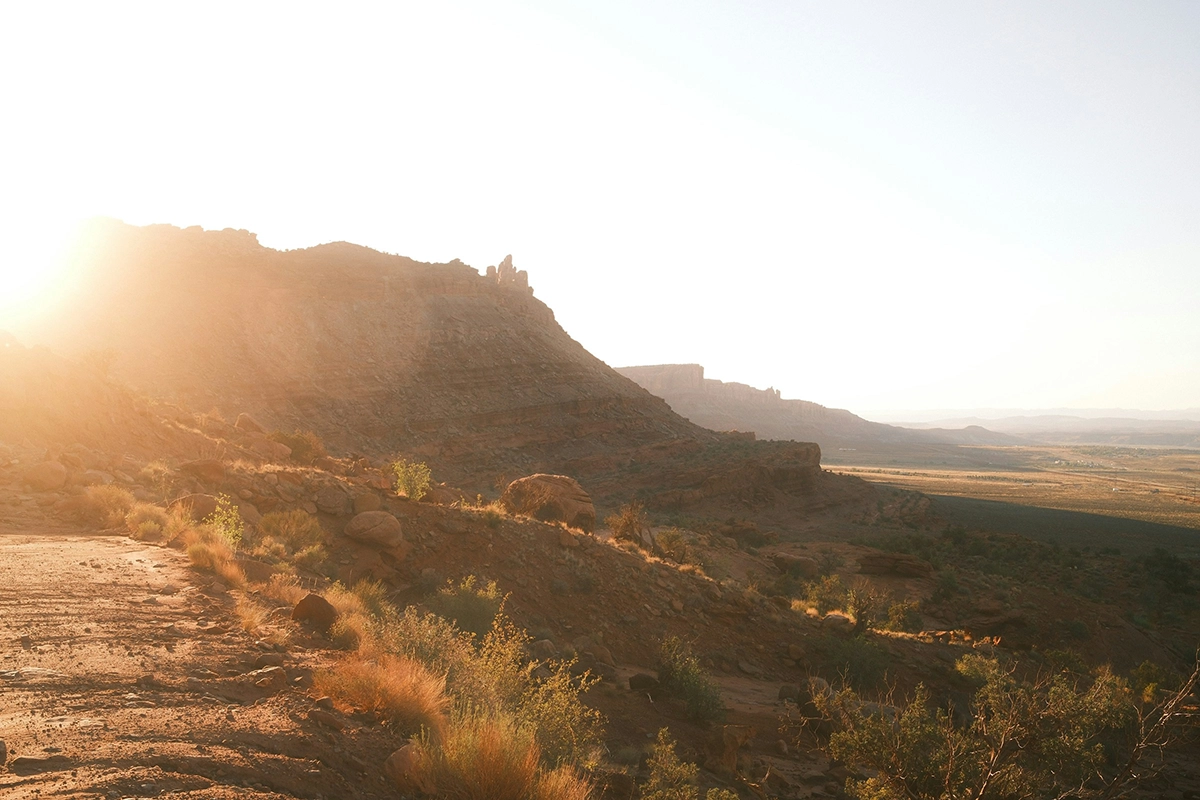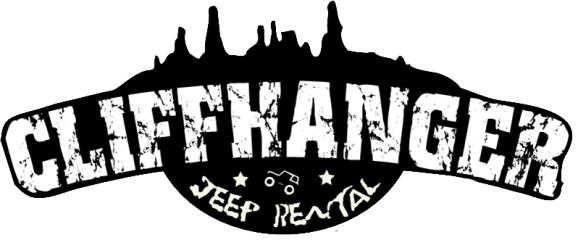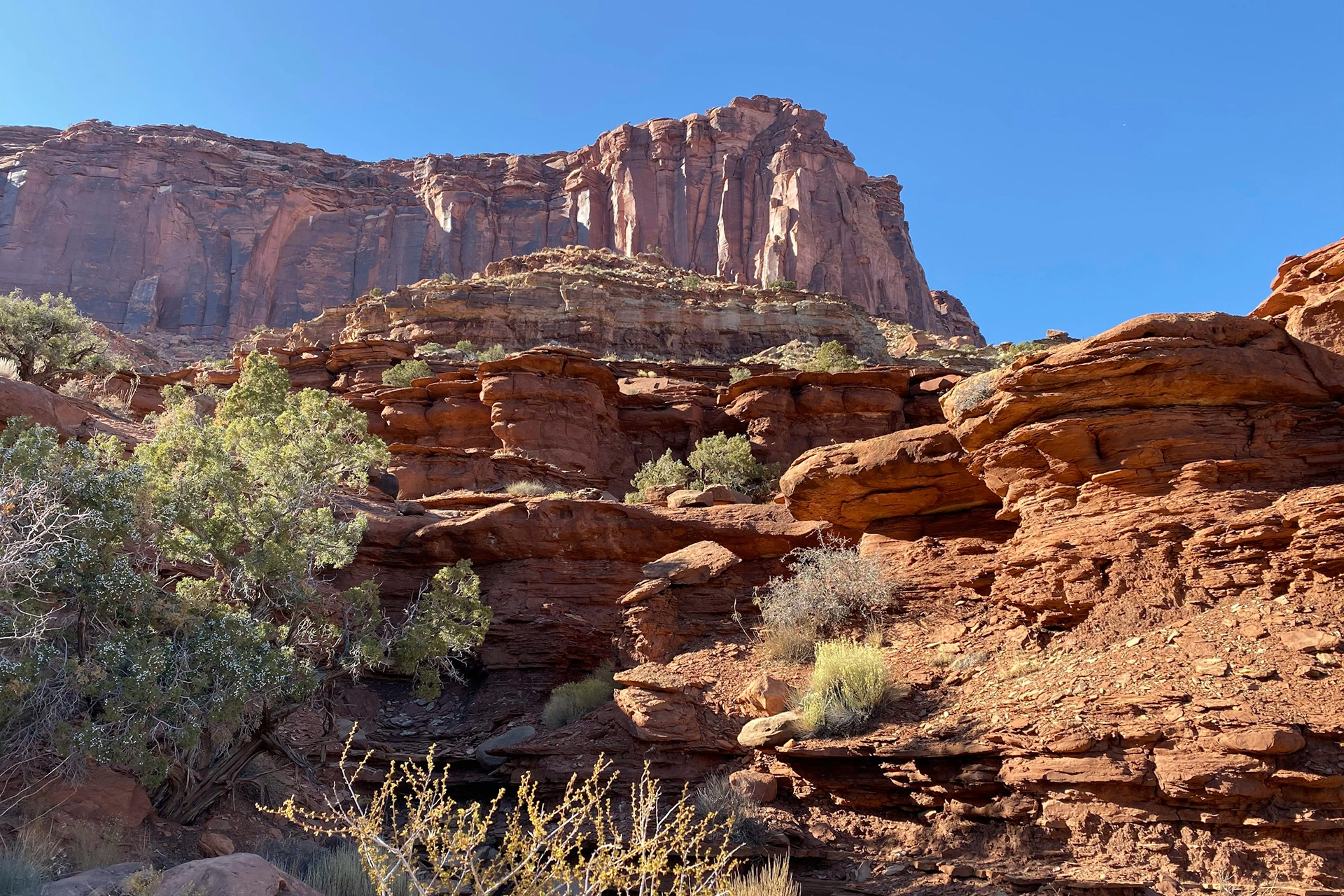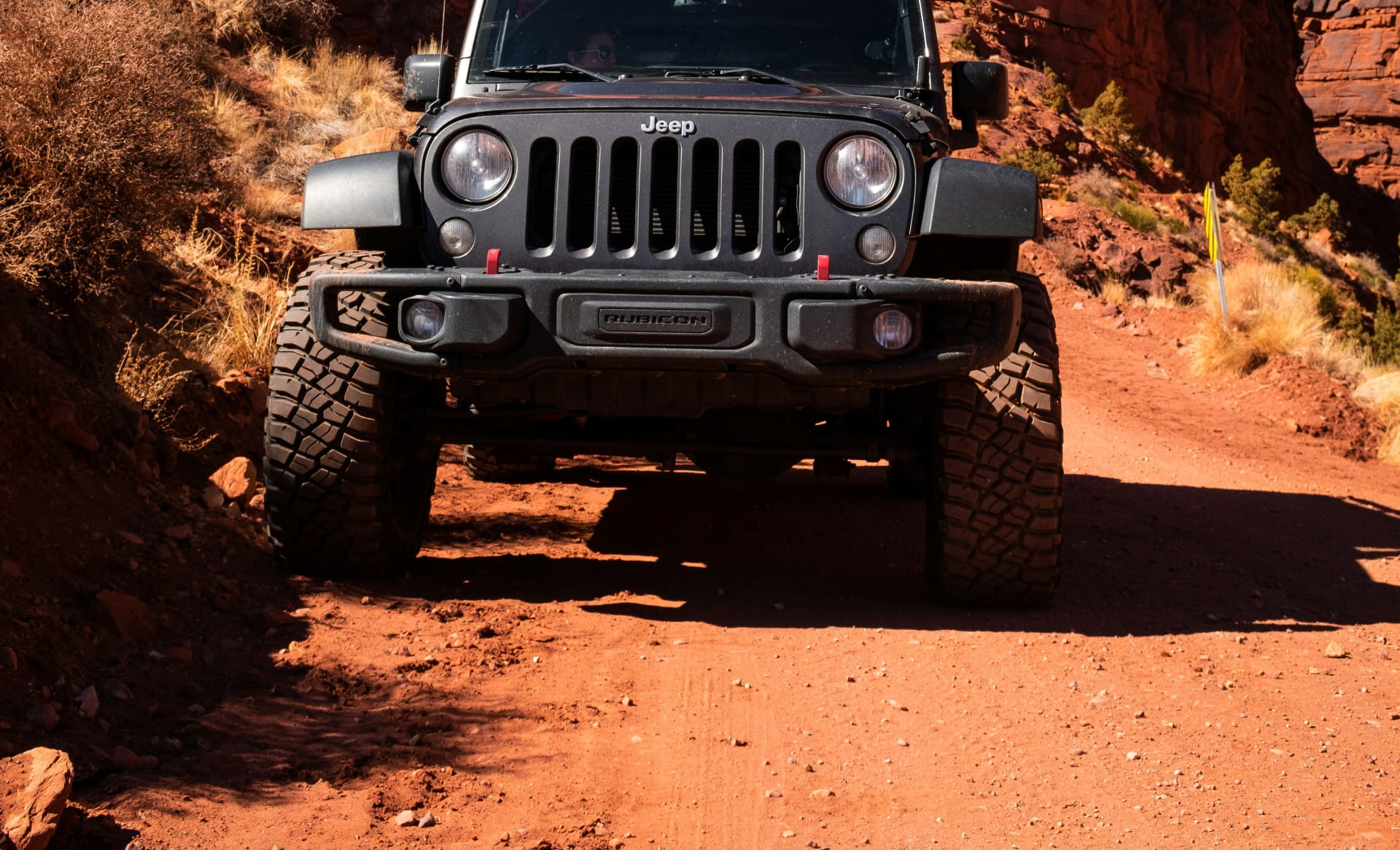Why Poison Spider Separates Serious Jeepers from Weekend Warriors
Poison Spider Mesa sits 1,200 feet above the Colorado River, accessible only through six miles of technical rock crawling that eliminates roughly 90% of the people who consider attempting it. This isn't another scenic drive with optional challenging sections—every quarter-mile presents obstacles that require specific skills, proper equipment, and comfort with situations where mistakes create expensive consequences.
The trail earned its reputation through decades of humbling overconfident drivers and rewarding those who approach it with appropriate respect and preparation. What separates Poison Spider from Moab's more accessible routes isn't just difficulty—it's the sustained technical nature that demands consistent performance rather than occasional heroics.
Most Moab trails offer challenging moments between easier sections, but Poison Spider maintains relentless technical demands that test every aspect of vehicle capability and driver skill.
Reputation Among Technical Off-Road Enthusiasts
Among serious rock crawlers, successfully completing Poison Spider represents a legitimate milestone that carries weight in off-road communities nationwide. The trail appears on every expert-level route list not because it's the most difficult in Moab, but because it combines technical obstacles with sustained difficulty over meaningful distance.
The route's reputation stems from its ability to expose weaknesses in both equipment and technique that other trails might not reveal. Drivers who breeze through Hell's Revenge or Fins and Things often discover that Poison Spider operates by different rules, requiring skills they didn't know they lacked and vehicle capabilities they assumed they possessed.
The Bottom Line: Poison Spider functions as a reality check for people who think they understand technical off-roading—it separates actual expertise from confidence built on easier terrain.
What Makes This Route Different
Unlike scenic trails that incorporate challenging sections between easier passages, Poison Spider maintains technical difficulty throughout its length. The obstacles aren't isolated features you can bypass or modify—they're integrated into the fundamental character of the route, requiring sustained attention and consistent execution.
The trail's design eliminates the recovery time that most routes provide between challenging sections. Each obstacle flows directly into the next, preventing drivers from regrouping, reassessing, or benefiting from momentum gained on easier terrain. This creates cumulative stress on both equipment and decision-making abilities that reveals limitations other trails might not expose.
The Bottom Line: Poison Spider's sustained difficulty eliminates the margin for error that makes other technical trails manageable for moderately experienced drivers.
Physical and Mental Demands
The physical demands of Poison Spider extend beyond basic vehicle operation to include extended periods of tension, precise control inputs, and sustained concentration over several hours. Drivers experience fatigue patterns similar to other high-stakes activities where mistakes carry real consequences—the mental load of constant vigilance affects physical performance in ways that casual off-roading doesn't approach.
Spotters face equally demanding requirements, maintaining focus and communication skills while positioning themselves safely around unstable vehicles on slickrock surfaces that offer limited secure footing. The combination of physical exertion, environmental exposure, and sustained alertness creates fatigue that affects judgment and reaction times throughout the day.
The Bottom Line: Poison Spider demands both physical endurance and mental resilience that recreational off-roading rarely develops—success requires treating it as a serious athletic and technical challenge rather than a casual outdoor activity.

Trail Overview: Understanding What You're Getting Into
Poison Spider Mesa trail begins at the Behind the Rocks trailhead, approximately 12 miles south of Moab on Highway 191. The route climbs through increasingly technical terrain before reaching the mesa top at 5,200 feet elevation, providing expansive views of the Colorado River, Castle Valley, and the La Sal Mountains. What appears as a relatively short trail on maps translates into a full-day commitment that tests every aspect of four-wheel-drive capability.
The trail's deceptive nature becomes apparent within the first mile, where obstacles that look manageable from a distance reveal technical challenges that eliminate unprepared vehicles. Understanding the actual requirements—rather than optimistic assumptions—prevents expensive mistakes and dangerous situations in terrain where recovery becomes complicated quickly.
Total distance: 6 miles one-way with mandatory return via same route
Elevation gain: 1,200 feet through sustained technical climbing
Average completion time: 6-8 hours for experienced teams, longer for first attempts
Seasonal access: Best conditions April-May and September-October
Minimum vehicle requirements: High-clearance 4WD with low-range transfer case
Location and Access Points
The Behind the Rocks trailhead provides the only practical access to Poison Spider Mesa, located 12 miles south of Moab on Highway 191. Parking availability becomes limited during peak seasons, with overflow areas that may require short walks to reach the actual trailhead. The area offers no facilities, water, or shade, making preparation and self-sufficiency requirements that begin before you start driving.
GPS coordinates place the trailhead at 38.4606° N, 109.4925° W, but cellular coverage remains unreliable throughout the area. Physical maps and downloaded offline navigation become necessary for anyone unfamiliar with the approach roads, which include several unmarked intersections that can confuse first-time visitors attempting to locate the correct starting point.
Distance and Time Requirements
The 6-mile distance to Poison Spider Mesa summit represents one of the most misleading trail statistics in Moab. Technical obstacles, mandatory spotting sections, and the sustained difficulty create time requirements that bear no relationship to normal driving distances.
Experienced teams typically require 6-8 hours for completion, while first-time attempts often extend to 10+ hours when accounting for route-finding, multiple attempt runs at difficult obstacles, and the learning curve that technical terrain demands.
Difficulty Rating Explanation
The "expert only" rating reflects specific technical requirements rather than general off-road experience. Drivers need demonstrated competency in precise wheel placement, momentum management on steep slickrock, and recovery techniques for high-angle situations where standard methods don't apply.
Vehicle requirements include short wheelbase capability, aggressive tire compounds that work on sandstone, and armor protection for inevitable contact with rock surfaces. Most importantly, the rating assumes spotting skills and team coordination that recreational wheeling rarely develops to necessary levels.
Required skills: Advanced rock crawling, high-angle recovery, precision driving
Vehicle specifications: Short wheelbase, 35"+ tires, front/rear lockers strongly recommended
Experience level: Demonstrated success on other expert-rated Moab trails
Team requirements: Experienced spotter, recovery equipment, communication protocols
Best Seasons for Optimal Conditions
Spring conditions (April-May) provide the most reliable weather with moderate temperatures that reduce heat-related stress on both drivers and equipment. Morning starts become possible without the extreme heat that makes summer attempts dangerous, while longer daylight hours provide adequate time for completion without rushing.
Fall seasons (September-October) offer similar advantages with stable weather patterns and comfortable temperatures. These periods avoid the summer heat that makes extended physical exertion dangerous and the winter conditions that create slippery surfaces on already challenging obstacles.
Optimal timing: April-May and September-October for temperature and weather stability
Summer challenges: Extreme heat, afternoon thunderstorms, increased dehydration risk
Winter limitations: Icy surfaces, shorter daylight, unpredictable weather changes
Daily timing: Early morning starts recommended to avoid afternoon heat and storms
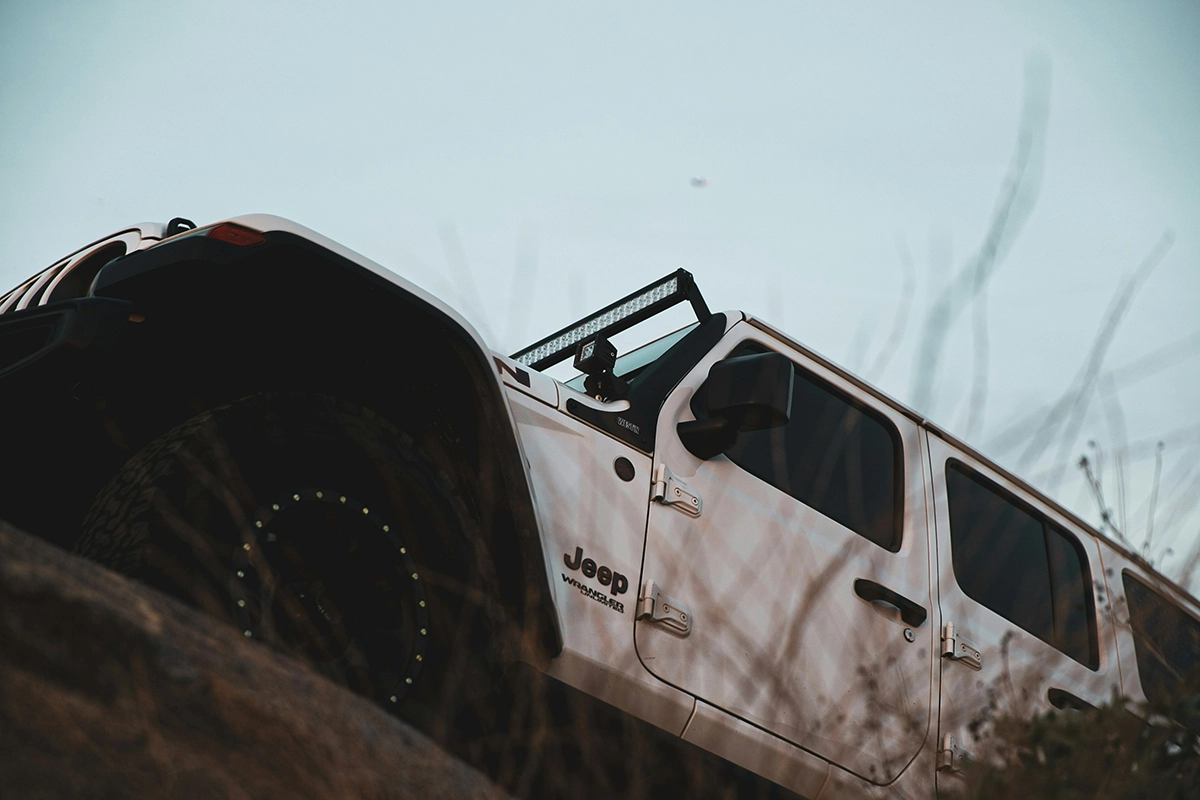
The Geology Behind the Challenge
The Entrada Sandstone formations that create Poison Spider Mesa's obstacles began as wind-blown sand dunes roughly 150 million years ago, when this area resembled the modern Sahara Desert. Over geological time, these dunes compressed into rock layers that retained the original dune structures—cross-bedding patterns, varying grain sizes, and weakness planes that determine how the rock breaks and where vehicles find traction. Understanding this history explains why certain surfaces provide grip while others crumble, and why the trail follows specific routes that work with the rock's natural structure rather than fighting against it.
Entrada Sandstone: From Ancient Dunes to Modern Obstacles
The Entrada Sandstone formed during the Jurassic period when prevailing winds deposited sand in massive dune fields across what would become the Colorado Plateau. The original dune structures remain visible in the rock's cross-bedding patterns, which create natural ramps, ledges, and fracture lines that modern vehicles use for traction and obstacles.
These ancient dune deposits explain why Poison Spider's rock surfaces behave so differently from typical limestone or granite found in other climbing areas. The sandstone's relatively soft composition and layered structure create surfaces that can support enormous weight when approached correctly but fail catastrophically when stressed beyond their design limits.
The rock formations you're climbing on Poison Spider Mesa are essentially fossilized sand dunes that happen to provide excellent traction when you understand their grain structure and weakness patterns.
Rock Behavior: Friction, Fractures, and Failure Points
Entrada Sandstone provides remarkable traction on clean, dry surfaces due to its rough texture and iron oxide content that creates the characteristic red coloration. However, this same composition makes it susceptible to rapid deterioration when exposed to moisture, repeated stress, or impacts that exceed its compressive strength.
The rock's behavior changes dramatically based on surface conditions that aren't always obvious to drivers. Dust, moisture, or loose sand on slickrock surfaces can eliminate traction completely, while hairline fractures invisible from driver's seats can indicate areas where the rock might fail under vehicle weight.
Optimal traction conditions: Clean, dry surfaces with visible iron oxide staining
Dangerous surface indicators: Dust accumulation, moisture streaks, or recent rockfall debris
Structural warning signs: Hairline cracks, hollow sounds when struck, or visible layering separation
Seasonal variations: Spring conditions often provide best grip, while winter moisture creates hazardous surfaces
Reading Terrain: Visual Cues for Route Selection
Successful Poison Spider navigation requires reading subtle visual cues that indicate safe routes versus areas where rock structure won't support vehicle weight or provide adequate traction. The cross-bedding patterns in Entrada Sandstone create natural ramps and ledges that work with vehicle geometry, while other areas present false lines that look passable but lead to stuck situations or damage.
Experienced drivers learn to identify the iron oxide staining that indicates solid, weathered surfaces with good traction, while avoiding areas where the rock appears fresh, unstained, or shows signs of recent fracturing. Color variations, surface texture, and the presence or absence of desert varnish provide reliable indicators of route viability that prevent costly mistakes.
Safe route indicators: Iron oxide staining, weathered surfaces, natural ramp formations following cross-bedding
Warning signs to avoid: Fresh fractures, loose rock debris, areas lacking desert varnish or staining
Structural cues: Cross-bedding patterns that create natural vehicle-width passages and stable surfaces
Seasonal changes: How recent weather affects surface conditions and grip characteristics
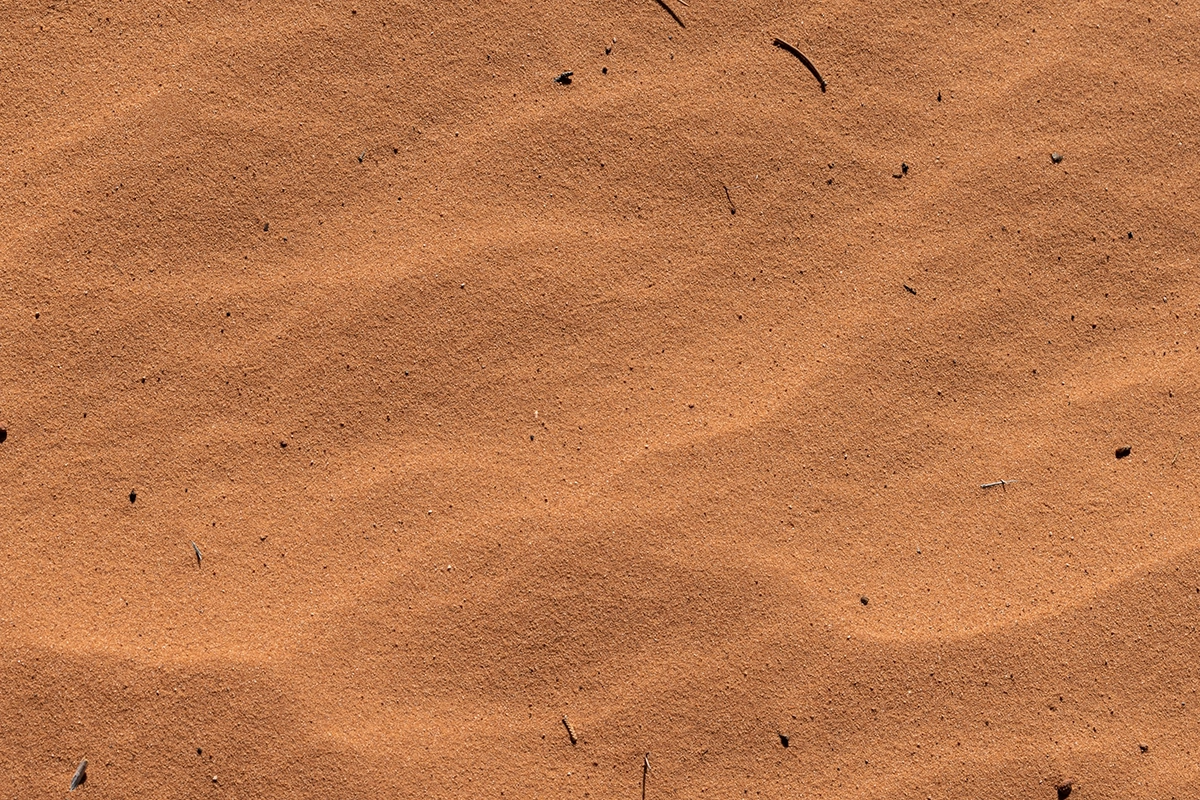
Section-by-Section Trail Breakdown
The Approach: Warm-Up Obstacles That Preview What's Coming
The first mile of Poison Spider serves as an unforgiving assessment of vehicle capability and driver skill that eliminates many attempts before they reach the truly technical sections. These initial obstacles appear manageable compared to what follows, but they reveal equipment limitations and technique deficiencies that become catastrophic problems on the more demanding sections ahead.
The approach includes several moderate ledges, off-camber sections, and loose rock areas that test basic rock crawling fundamentals. Vehicles that struggle here—requiring multiple attempts, experiencing tire spin, or needing assistance—should seriously reconsider continuing to the technical sections where these problems multiply exponentially.
The Bottom Line: If your vehicle or skills aren't adequate for the approach obstacles, the main trail will expose these limitations in expensive and potentially dangerous ways.
The Waterfall: Technical Climb That Stops Unprepared Vehicles
The Waterfall obstacle earned its name from the near-vertical sandstone face that requires vehicles to climb at angles approaching 45 degrees while maintaining traction on surfaces that offer limited grip. This section eliminates more attempts than any other single obstacle, serving as the trail's primary filter for inadequate equipment or technique.
Success requires understanding momentum management, precise throttle control, and spotter communication that many recreational wheelers haven't developed. Vehicles without sufficient power-to-weight ratios, adequate tire compound, or driver experience with high-angle climbs find themselves unable to complete this section, forcing difficult recovery situations in confined spaces.
The Bottom Line: The Waterfall functions as Poison Spider's main gatekeeper—vehicles that can't handle this obstacle cleanly shouldn't attempt the sections beyond it.
White Knuckle Hill: Off-Camber Exposure That Tests Nerves
White Knuckle Hill combines steep grades with significant off-camber angles that create the sensation of imminent rollover while requiring continued forward progress. The obstacle tests both vehicle stability limits and driver psychological comfort with situations where recovery from mistakes becomes extremely complicated.
The exposure factor adds mental pressure that affects decision-making and vehicle control in ways that flat-ground technical driving doesn't approach. Drivers must maintain precise steering inputs while their vehicle tilts at angles that trigger natural self-preservation instincts to stop or retreat.
The Bottom Line: White Knuckle Hill separates drivers who can perform under pressure from those whose skills deteriorate when consequences become visible and immediate.
The Chute: Narrow Passage Requiring Precise Wheel Placement
The Chute forces vehicles through a narrow sandstone corridor where precise wheel placement becomes mandatory rather than recommended. The passage width eliminates margin for error, requiring drivers to thread their vehicle between rock walls while maintaining momentum over uneven surfaces that can deflect steering unpredictably.
Vehicles with wider track widths or less experienced drivers often find themselves wedged between walls, creating recovery situations that require complex extraction techniques in spaces barely wider than the vehicle itself. The confined nature of the obstacle makes traditional recovery methods difficult or impossible to implement safely.
The Bottom Line: The Chute punishes imprecise driving and oversized vehicles—success requires surgical precision in vehicle placement combined with commitment to lines that offer no room for correction.
Hell's Gate: The Trail's Most Infamous Obstacle
Hell's Gate represents Poison Spider's signature obstacle, combining extreme articulation requirements with exposure that makes mistakes visible from miles away. The feature requires vehicles to climb through a narrow gap in a sandstone formation while negotiating severe cross-axle articulation that can lift wheels completely off the ground.
The psychological factor of Hell's Gate often proves more challenging than the technical requirements. Drivers must commit to lines that appear impossible while trusting their spotter's guidance in situations where they cannot see their wheel placement or the consequences of steering errors.
The Bottom Line: Hell's Gate demands complete trust in your spotter, absolute commitment to the chosen line, and vehicle articulation that exceeds what most recreational setups can achieve—hesitation or second-guessing typically results in failure.
Mesa Top Rewards: Why the Summit Views Justify the Struggle
The Poison Spider Mesa summit provides 360-degree views encompassing the Colorado River, Castle Valley, Arches National Park, and the distant La Sal Mountains that justify every technical challenge required to reach this elevation. The perspective reveals the scale and complexity of Moab's canyon country from a vantage point accessible only to those willing to meet the trail's demands.
Beyond the scenic rewards, reaching the mesa top represents genuine accomplishment in the off-road community. The combination of technical difficulty, sustained challenge, and legitimate consequences creates an achievement that carries weight among serious enthusiasts who understand what successful completion actually requires.
The Bottom Line: The mesa top views provide spectacular photographic opportunities, but the real reward lies in proving your skills and equipment against one of Moab's most demanding technical challenges.
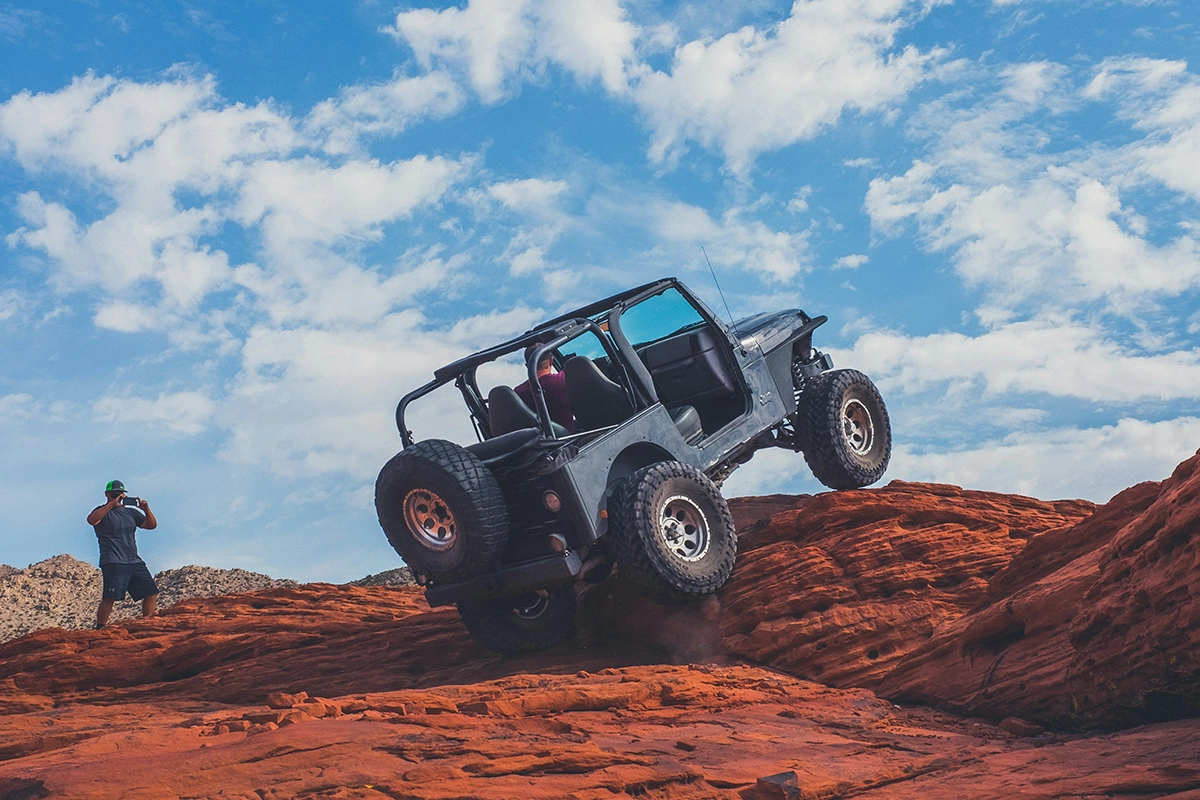
Vehicle Requirements and Modifications
Poison Spider Mesa demands specific vehicle capabilities that recreational off-road setups often lack, regardless of how impressive they appear in parking lots or on easier trails. The sustained technical nature eliminates vehicles that might handle individual challenging obstacles but can't maintain performance throughout six miles of demanding terrain. Understanding the difference between looking capable and actually being capable prevents expensive lessons learned through stuck situations, damage, or dangerous recovery scenarios.
The trail's requirements stem from physics and geometry rather than subjective preferences—certain wheelbase lengths, ground clearance measurements, and drivetrain configurations work while others simply don't. Attempting Poison Spider without meeting these minimum specifications typically results in situations where good intentions meet immovable geological realities.
Minimum ground clearance: 10+ inches at lowest point, with skid plate protection
Wheelbase requirements: Short wheelbase (under 100 inches) for break-over angle clearance
Drivetrain needs: Low-range transfer case with 4:1 or lower gearing ratios
Tire specifications: 35+ inch diameter with aggressive tread compound designed for rock
Weight considerations: Lower weight-to-power ratios perform better on sustained climbs
Minimum Specifications That Actually Matter
Ground clearance becomes the limiting factor on multiple obstacles where undercarriage contact with sandstone ledges stops forward progress completely. Vehicles requiring 10+ inches of clearance at their lowest point, measured with full fuel, passengers, and equipment loads that reflect actual trail conditions rather than empty vehicle specifications.
Wheelbase length determines break-over capability on the numerous ledges and drop-offs that characterize the route. Short wheelbase vehicles (under 100 inches) can navigate obstacles that longer vehicles simply cannot clear without expensive undercarriage damage or high-centering situations that require complex recovery techniques.
Ground clearance reality: Measure loaded vehicle, not manufacturer specifications
Wheelbase limits: Longer vehicles get stuck on obstacles shorter ones clear easily
Approach/departure angles: 35+ degrees required for ledge navigation without damage
Traction requirements: Aggressive tire compounds that grip sandstone when clean and dry
Power delivery: Low-range gearing that allows precise control at walking speeds
Recommended Modifications That Make a Difference
Front and rear differential lockers provide the single most important modification for Poison Spider success, allowing vehicles to maintain forward progress when individual wheels lose traction on slickrock surfaces. Electronic or air-operated lockers offer reliability advantages over automatic units that may not engage when needed most.
Skid plate armor protects expensive drivetrain components from inevitable contact with sandstone surfaces during extreme articulation and steep climbing sections. Quality armor distributes impact loads across structural members rather than concentrating stress on vulnerable components like oil pans or transmission cases.
Differential lockers: Front and rear lockers dramatically improve traction and reduce tire spin
Skid plate protection: Heavy-duty armor for transfer case, transmission, and fuel tank areas
Suspension articulation: Long-travel shocks and flexible suspension links for wheel contact
Recovery points: Properly mounted front and rear recovery points rated for vehicle weight
Communication equipment: Two-way radios for spotter coordination in technical sections
What Doesn't Help: Expensive Irrelevance
Elaborate light bars, expensive audio systems, and decorative modifications provide no benefit on technical terrain where ground clearance, articulation, and traction determine success or failure. Many vehicles arrive at Poison Spider equipped with thousands of dollars worth of accessories that don't address the actual challenges the trail presents.
Oversized tires beyond 37 inches often create more problems than they solve, adding unsprung weight that reduces acceleration and increasing stress on drivetrain components while providing minimal traction benefits over properly chosen smaller tires. The additional size can also create clearance issues in narrow sections like The Chute.
Stock Vehicle Reality Check
Modern stock 4WD vehicles possess impressive capabilities on paper but typically lack the specific modifications that Poison Spider demands. Factory skid plates provide minimal protection, open differentials lose traction on slickrock surfaces, and ground clearance measurements assume empty vehicles rather than loaded trail conditions.
Stock Jeep Wranglers, Toyota 4Runners, and similar vehicles can handle many Moab trails successfully but require significant modifications to complete Poison Spider safely. Attempting the trail in unmodified vehicles often results in damage, stuck situations, or dangerous recovery scenarios that exceed the capabilities of standard equipment.
Stock vehicles that successfully complete Poison Spider are extremely rare exceptions driven by exceptionally skilled operators under ideal conditions—assuming your stock vehicle will make it typically leads to expensive reality checks involving tow trucks and repair shops.
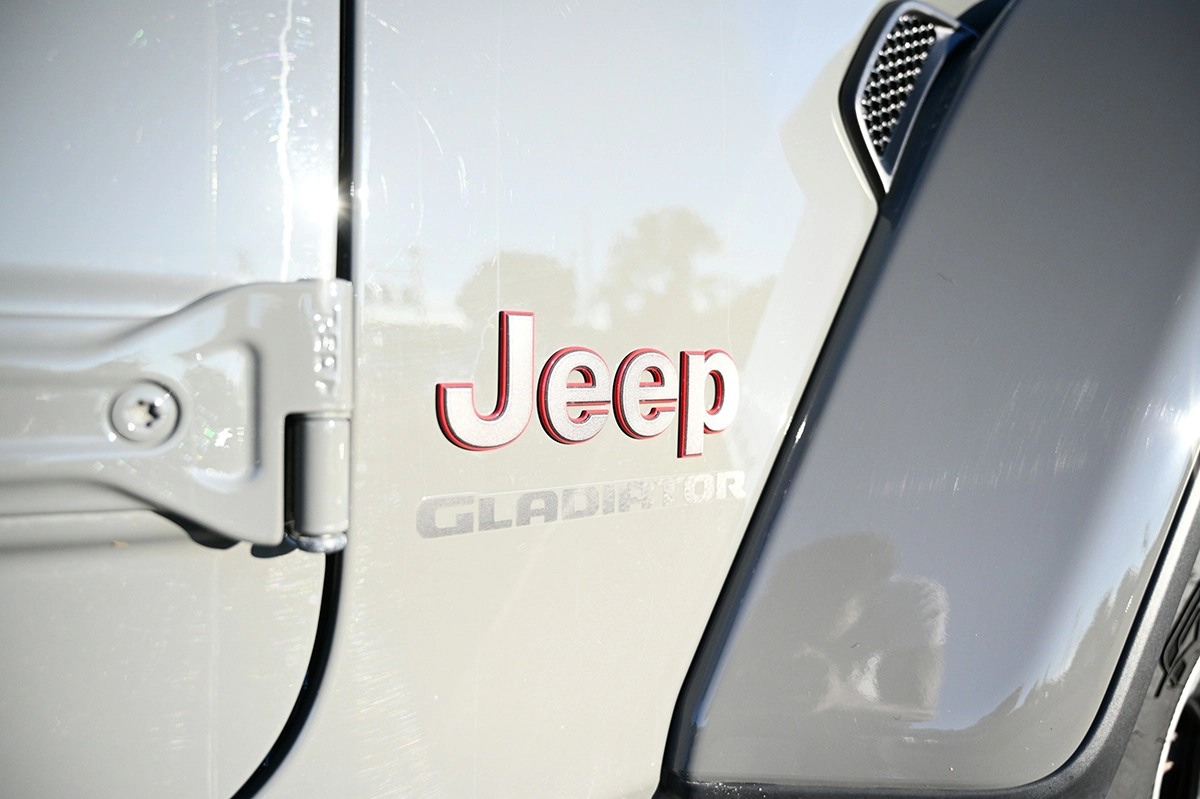
Cliffhanger Jeep Rental Advantage
Attempting Poison Spider Mesa in a personal vehicle creates a cascade of potential problems that professional rental services eliminate through purpose-built equipment, local expertise, and comprehensive support systems. Most people underestimate the specific modifications, insurance implications, and specialized gear that serious technical trails demand until they're dealing with expensive consequences miles from help.
Cliffhanger Jeep Rentals operates vehicles designed specifically for Moab's most challenging terrain, with modifications and maintenance protocols that reflect years of experience with what actually works versus what looks impressive in magazines. The difference between rental vehicles and personal rigs becomes apparent when technical challenges exceed the capabilities of compromise setups designed for multiple purposes.
Purpose-Built Vehicles: Professional Specifications
Pro Tips for Understanding Rental Vehicle Advantages:
Cliffhanger's fleet includes vehicles with proven modification combinations that handle Poison Spider's specific challenges rather than general off-road capabilities. Short wheelbase Jeeps with aggressive gearing, heavy-duty armor, and suspension systems designed for sustained technical use eliminate the guesswork about whether your vehicle can handle specific obstacles.
Professional maintenance schedules address the accelerated wear that technical rock crawling creates, with component replacements and inspections that prevent mechanical failures in remote locations. Rental vehicles receive attention to critical systems—brakes, steering, suspension—that recreational vehicles often lack until problems develop during challenging situations.
The fleet specifications reflect real-world testing on Poison Spider rather than theoretical capabilities, with modifications proven through thousands of miles of technical terrain rather than parking lot theorizing about what might work.
Local Expertise: Route Knowledge That Prevents Problems
Cliffhanger staff possess intimate knowledge of current trail conditions, seasonal variations, and vehicle-specific route recommendations that guidebooks and online forums can't provide. This expertise includes understanding which obstacles require specific techniques, where alternative lines exist, and how recent weather affects rock conditions and grip characteristics.
The local knowledge extends to vehicle matching—pairing customer experience levels with appropriate vehicle capabilities and recommending routes that build skills progressively rather than throwing inexperienced drivers into situations beyond their abilities. This approach prevents the expensive mistakes and dangerous situations that result from overestimating capabilities or underestimating challenges.
Insurance and Support: Professional Coverage
Personal vehicle insurance policies typically exclude coverage for off-road activities, leaving owners responsible for expensive repairs, recovery costs, and potential liability issues that technical trails can create. Cliffhanger's rental agreements include comprehensive coverage that protects customers from financial consequences of normal trail use and equipment failure.
The support system includes emergency communication protocols, recovery equipment, and local contacts that personal vehicle owners must arrange independently. Professional rental operations maintain relationships with recovery services, repair facilities, and emergency contacts that can respond quickly when situations exceed customer capabilities.
Equipment Included: Specialized Gear
Ready to experience Poison Spider Mesa with confidence? Cliffhanger Jeep Rentals provides the purpose-built vehicles, local expertise, and comprehensive support that turns challenging adventures into successful achievements. Contact Cliffhanger today and discover why serious off-road enthusiasts choose professional equipment for serious trails.

Planning Your Poison Spider Adventure
Successful Poison Spider attempts require planning that extends weeks beyond the actual trail date, with preparation covering vehicle readiness, skill development, team coordination, and contingency scenarios that casual off-roading rarely demands. The trail's unforgiving nature punishes inadequate preparation through expensive mistakes, dangerous situations, or failed attempts that waste entire days while teaching expensive lessons about the difference between confidence and competence.
Most failed attempts result from inadequate preparation rather than equipment failure or bad luck. The trail rewards methodical planning and punishes optimistic assumptions about vehicle capabilities, weather conditions, or the time required to complete technical obstacles that don't respond to enthusiasm or determination alone.
Minimum preparation timeline: 2-4 weeks for vehicle modifications and skill development
Optimal group size: 2-3 vehicles with experienced spotters and recovery equipment
Realistic time allocation: Full day commitment with early start and late finish expectations
Weather monitoring: Check conditions 48-72 hours in advance with flexible scheduling
Emergency planning: Communication devices, first aid supplies, and extraction contingencies
Preparation Timeline: Building Capabilities
Vehicle preparation begins with honest assessment of current modifications against Poison Spider's actual requirements, followed by installation and testing of necessary upgrades well before the planned attempt. Last-minute modifications create reliability questions and prevent drivers from developing familiarity with new equipment under controlled conditions.
Skill development requires progressive experience on increasingly technical trails that build the specific techniques Poison Spider demands. Drivers who jump directly from moderate trails to expert-level routes often discover capability gaps at the worst possible moments, when retreat becomes difficult and mistakes carry serious consequences.
Group Size and Team Composition
The optimal group size balances safety benefits with practical limitations that technical terrain imposes. Two vehicles provide mutual support for recovery situations while maintaining manageable group dynamics, while three vehicles offer additional safety margin without creating coordination complexity that slows progress unacceptably.
Each vehicle requires at least one experienced spotter capable of reading terrain, communicating effectively, and positioning safely around moving vehicles on unstable surfaces. Inexperienced spotters create safety hazards and slow progress through poor communication and positioning mistakes that force repeated attempts at technical obstacles.
Minimum team: Two vehicles with experienced drivers and dedicated spotters
Maximum practical size: Three vehicles to avoid coordination delays and communication issues
Required skills per vehicle: Driver with technical experience, spotter with route knowledge
Communication equipment: Two-way radios with clear protocols for technical sections
Recovery capability: Each vehicle equipped for self-recovery and mutual assistance
Time Allocation and Realistic Scheduling
Poison Spider requires full-day commitment regardless of experience level, with successful attempts typically requiring 8-12 hours from trailhead departure to return. Technical obstacles eliminate the predictable pace that normal driving allows, with individual sections potentially requiring hours to complete when conditions or vehicle capabilities create complications.
Early starts become mandatory for completion before darkness, particularly during shorter winter days when afternoon weather changes can create dangerous conditions. Planning departure times around sunrise rather than convenient schedules prevents situations where technical challenges occur under time pressure or inadequate lighting conditions.
Realistic scheduling assumes that everything will take longer than expected and that at least one significant delay will occur—optimistic time estimates typically result in dangerous rushing through technical sections or incomplete attempts that require expensive return trips.
Backup Plans for Changing Conditions
Weather conditions can transform Poison Spider from challenging to dangerous within hours, particularly when afternoon thunderstorms create slippery surfaces on already technical obstacles. Monitoring weather forecasts 48-72 hours in advance allows for schedule adjustments that prevent committing to attempts during unsuitable conditions.
Alternative trail options in the same area provide backup activities when conditions make Poison Spider inadvisable, allowing groups to maintain productive adventure schedules without wasting travel time and preparation efforts. Understanding which alternative routes work with current vehicle modifications and skill levels prevents disappointment while building experience for future Poison Spider attempts.
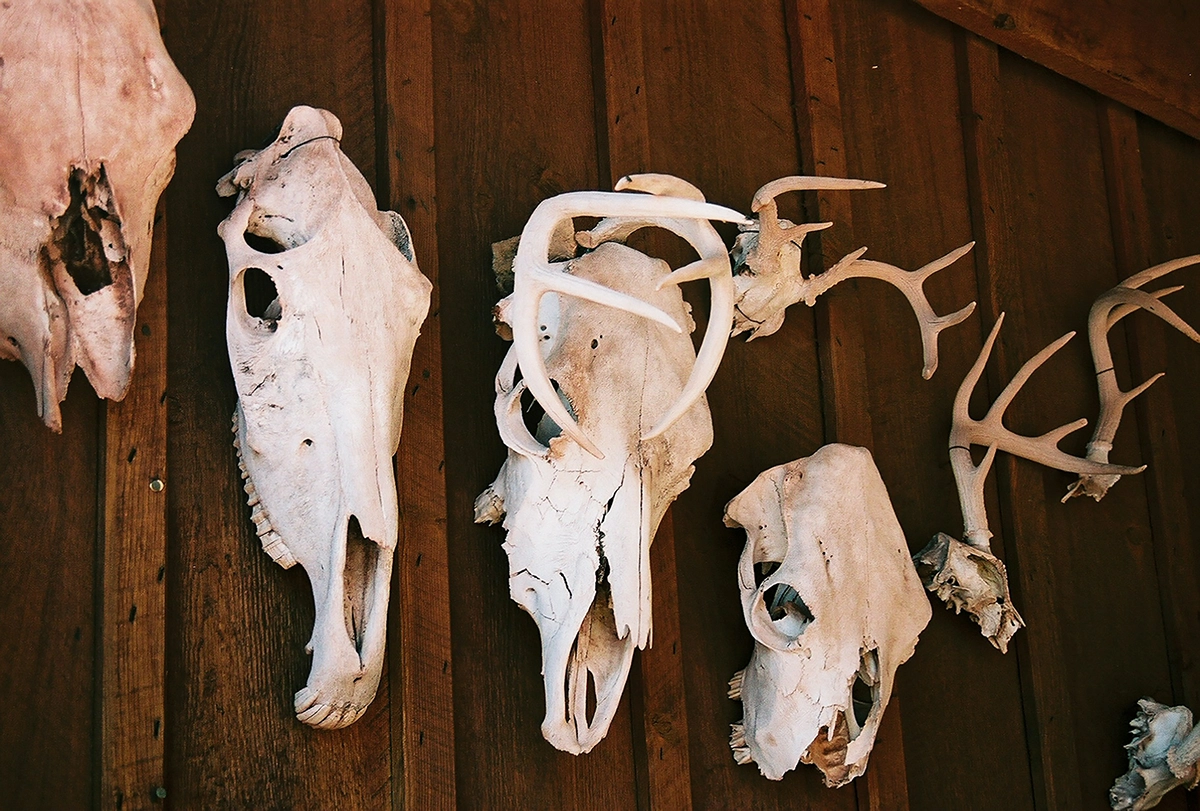
Earning Your Place on Poison Spider Mesa
Successfully completing Poison Spider Mesa represents more than checking another trail off your list—it demonstrates mastery of technical skills, equipment knowledge, and judgment that separates serious off-road enthusiasts from recreational drivers. The trail doesn't care about your previous experience, expensive modifications, or confidence level. It responds only to precise execution, appropriate preparation, and respect for the geological forces that created obstacles no amount of enthusiasm can overcome through determination alone.
What Successful Completion Actually Means
Reaching Poison Spider Mesa summit proves you've developed the specific combination of vehicle capability, driving technique, and team coordination that expert-level trails demand. The achievement carries weight in off-road communities because people understand the preparation, skill development, and equipment requirements that successful completion represents.
The trail functions as an honest assessment of technical abilities that can't be faked or improvised. Every obstacle requires demonstrable competency in precise wheel placement, momentum management, and recovery techniques that take years to develop and expensive equipment to execute properly.
Successful Poison Spider completion serves as a legitimate credential in technical off-roading circles because the trail eliminates pretenders while rewarding genuine expertise developed through progressive skill building and appropriate preparation.
How the Experience Changes Your Perspective
Completing Poison Spider recalibrates your understanding of what constitutes challenging off-road terrain and reveals the significant gap between recreational wheeling and technical rock crawling. Trails that previously seemed difficult become stepping stones, while you develop appreciation for the sustained difficulty and unforgiving nature that characterizes truly expert-level routes.
The experience teaches humility about natural forces that dwarf human capabilities while simultaneously building confidence in your ability to meet challenges through preparation, skill development, and appropriate equipment choices. You understand that technical trails reward methodical approaches over aggressive driving and that successful completion requires meeting the terrain on its terms rather than imposing your preferences on immovable geological realities.
Remember: Poison Spider Mesa doesn't compromise its standards for anyone—success requires developing the skills, acquiring the equipment, and demonstrating the judgment that this level of technical challenge demands, making the achievement meaningful precisely because it can't be shortcut or faked through good intentions alone.
Why Some Challenges Demand Respect
Poison Spider Mesa exists as a reminder that some experiences require genuine commitment and preparation rather than casual attempts based on optimistic assessments of current capabilities. The trail teaches important lessons about the relationship between preparation and success, consequences and decision-making, and the satisfaction that comes from meeting difficult challenges through competent execution rather than luck or determination.
The geological forces that created these obstacles operated over millions of years with consistency and power that make human timescales seem insignificant. Approaching the trail with appropriate respect for these forces—and honest assessment of your ability to work within their constraints—creates experiences that change how you understand both natural systems and personal capabilities.
Remember: The most rewarding adventures require meeting challenges on their own terms rather than expecting them to accommodate your current skill level—Poison Spider Mesa rewards those willing to develop genuine competency while humbling those who mistake confidence for capability.
